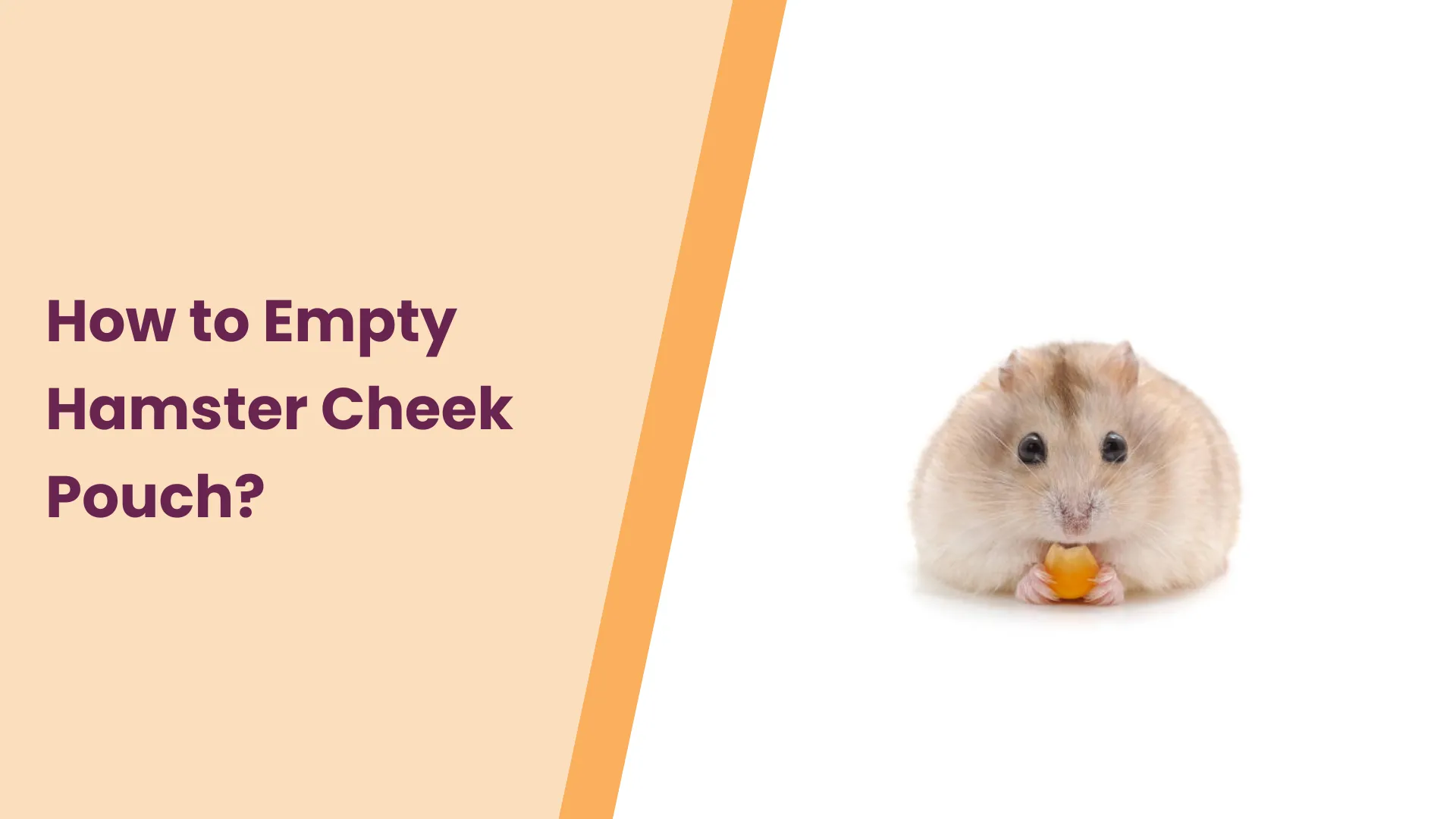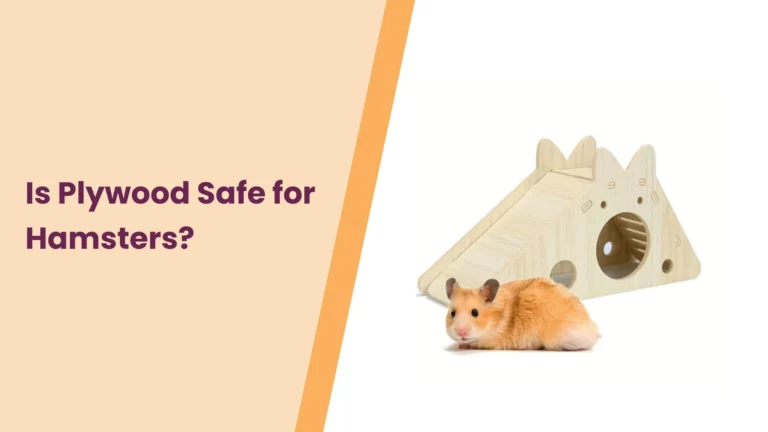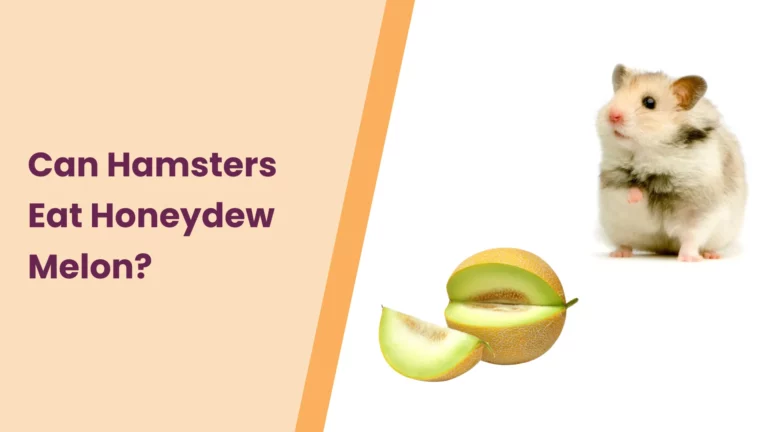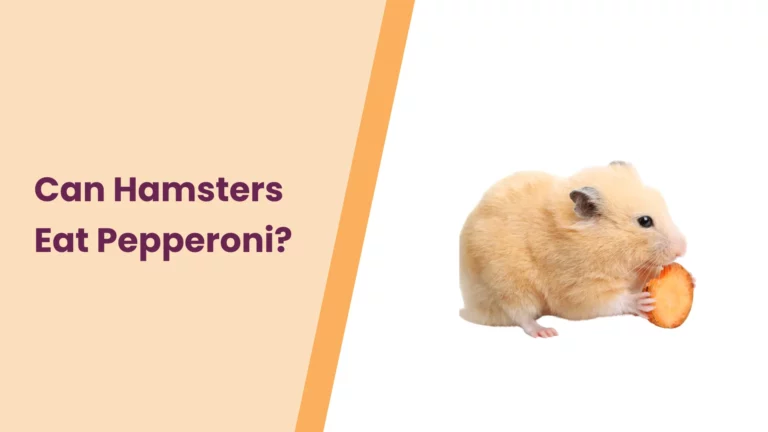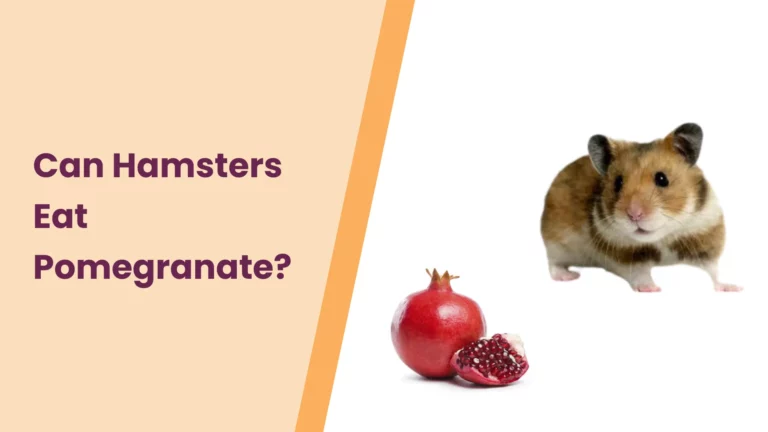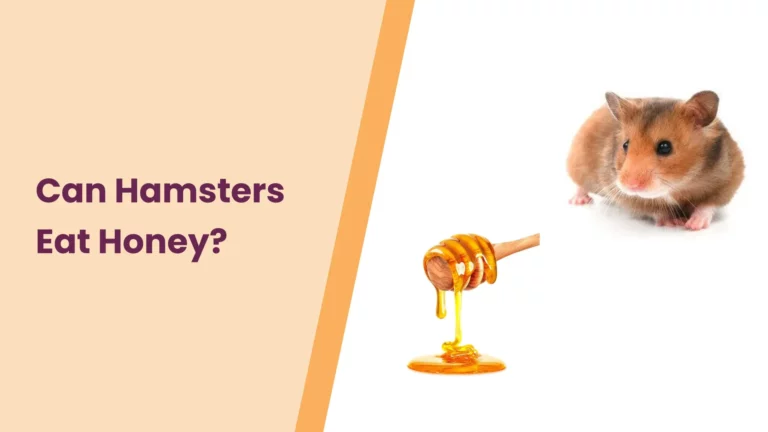How to Empty Hamster Cheek Pouch | Step-by-Step Guide
Welcoming a hamster into your home comes with its share of adorable moments, and one quirky behavior that often steals the spotlight is their cheek pouches. These tiny furballs have an incredible talent for storing an impressive array of items in those little pockets. However, as responsible hamster parents, it’s crucial to delve into the secrets of these cheek pouches and learn the art of safely emptying them. In this guide, we’ll embark on a journey to understand why your hamster’s cheek pouches are not just cute but also vital to their well-being.
Get ready to uncover the key steps to ensure a happy and healthy hamster with our step-by-step guide on how to delicately handle and empty those pouches. Let’s navigate the world of hamster care together and make those endearing cheek pouches a source of joy, not concern.
Understanding Hamster Cheek Pouches
Ever marveled at the sheer magic of watching your hamster seemingly defy physics by stashing an impressive amount of food in its cheeks? These remarkable cheek pouches are more than just a party trick; they’re an integral part of your hamster’s survival strategy. In the wild, hamsters use these pouches to hoard food, allowing them to transport provisions back to their nests efficiently.
Why Cheek Pouches Matter:
Hamster cheek pouches are like miniature treasure chests, providing a temporary storage solution that aids in survival. These extendable pouches are located on either side of a hamster’s face and can stretch to nearly double the size of their head. Besides food, hamsters use their pouches to transport nesting material, ensuring a cozy and secure home.
What’s Inside:
Understanding the contents of these pouches is key to responsible hamster care. Hamsters may store a variety of items, including seeds, nuts, fruits, vegetables, and even bedding material. While this behavior is perfectly natural, it’s essential to be aware of potential issues that can arise if the cheek pouches are not emptied regularly.
The Significance of Regular Pouch Emptying:
While hamsters are adept at managing their cheek pouches, they may occasionally face challenges, such as overstuffing or difficulty in emptying the pouches voluntarily. This is where your role as a caring hamster owner comes into play. Regularly assisting your hamster in emptying its cheek pouches not only ensures their physical well-being but also strengthens the bond between you and your furry friend.
As we delve deeper into the world of hamster care, let’s unravel the secrets behind these captivating cheek pouches and learn the best practices for keeping your hamster happy, healthy, and always ready for a cheeky adventure.
Signs Your Hamster’s Cheek Pouches Need Attention
Your hamster’s cheek pouches are like the hidden drawers of a magical treasure chest, but sometimes even the best magic show requires a bit of behind-the-scenes care. As a vigilant hamster owner, it’s crucial to be attuned to signs indicating that your furry friend’s cheek pouches may need a little extra attention.
1. Unusual Behavior:
Keep an eye on your hamster’s behavior. If you notice them pawing at their face, rubbing their cheeks against surfaces, or displaying signs of discomfort, it could be an indication that their cheek pouches are causing irritation.
2. Changes in Eating Habits:
Hamsters are notorious for their love of nibbling, but any sudden changes in their eating habits should be noted. If your hamster is avoiding certain foods or struggling to chew, it might be due to pouch-related issues.
3. Swelling or Lump Formation:
Gently inspect your hamster’s face for any signs of swelling or lumps. While cheek pouches are naturally pouchy, an abnormal increase in size or the presence of unusual lumps may signify an obstruction or overstuffing.
4. Reluctance to Empty Pouches:
Some hamsters may face difficulty in emptying their cheek pouches voluntarily. If you observe your furry friend struggling to release items from their pouches, it’s a clear signal that they could use a helping hand.
5. Unpleasant Odor:
A foul odor emanating from your hamster’s mouth could indicate trapped food or other items in the cheek pouches. Regular emptying helps prevent not only discomfort but also ensures good oral hygiene.
Why It Matters:
Addressing these signs promptly is crucial for maintaining your hamster’s overall well-being. Ignoring pouch-related issues could lead to more severe complications, impacting their ability to eat, groom, and navigate their surroundings comfortably.
By staying attuned to these subtle signals, you become not just a hamster owner but a trusted caretaker, ensuring your pet’s happiness and health are always in the spotlight.
In the next section, we’ll embark on a step-by-step journey to guide you through the process of safely emptying your hamster’s cheek pouches, ensuring a seamless and stress-free experience for both you and your pint-sized companion.
Step-by-Step Guide on How to Empty Hamster Cheek Pouches

Welcome to the hands-on portion of hamster care where we unravel the mystery behind those fascinating cheek pouches. Emptying your hamster’s cheek pouches is a delicate task that requires a blend of patience, gentleness, and a touch of understanding. Let’s embark on this journey together to ensure your furry friend remains happy, healthy, and ever-ready for new adventures.
Prepare the Environment
Before you begin, create a quiet and comfortable space for both you and your hamster. Wash your hands thoroughly to eliminate any scents that might cause stress. Remember, a calm environment sets the stage for a successful pouch-emptying experience.
Gain Your Hamster’s Trust
Building trust with your hamster is essential. Spend some quality time interacting with them, offering treats, and allowing them to become familiar with your presence. Gradual bonding fosters a sense of security, making the pouch-emptying process smoother.
Gentle Handling Techniques
When it’s time to empty the pouches, hold your hamster securely but gently. Use one hand to support their body while using the other hand to carefully manipulate the cheek area. Applying slight pressure can encourage your hamster to release the items voluntarily. Be patient and avoid any sudden movements to prevent stress.
Providing Healthy Alternatives
Encourage natural pouch-emptying behavior by introducing appropriate chewing and nesting materials. This not only mimics their wild instincts but also promotes dental health and mental stimulation. Providing a variety of textures and shapes will keep your hamster engaged and less likely to overstuff their pouches.
Bonus Tip
Consider incorporating a bonding pouch into your routine. These small, soft pouches allow your hamster to feel secure while providing easy access to check and empty their cheek pouches.
Potential Challenges and Solutions
Embarking on the journey of hamster care is rewarding, but like any adventure, it comes with its share of challenges. When it comes to emptying your hamster’s cheek pouches, occasional hiccups are not uncommon. Understanding these challenges and having solutions at hand will empower you to be the best caretaker for your tiny companion.
1. Resistance and Fear:
Some hamsters may be initially resistant or fearful of cheek pouch handling. Patience is your best ally. Take it slow, allowing your hamster to acclimate to the process gradually. Offering treats and gentle encouragement can go a long way in building trust.
2. Stress during Handling:
Handling, even for a necessary task like pouch emptying, can stress your hamster. Minimize stress by keeping the environment calm and familiar. Ensure you’re handling your hamster gently, using slow movements to avoid sudden surprises.
3. Difficulty in Identifying Pouch Issues:
It might be challenging to identify specific issues within the cheek pouches. Regular health checks are essential. If you notice any persistent signs of discomfort or changes in behavior, consult with a veterinarian specializing in small animals. Their expertise will provide insights into potential underlying issues.
4. Overstuffing and Reluctance to Release Items:
Some hamsters may overstuff their pouches or struggle to release items voluntarily. Provide a balanced diet to discourage overstuffing. Introduce a variety of chewing and nesting materials to encourage natural pouch-emptying behavior. If the problem persists, consult with your vet for personalized advice.
5. Seeking Professional Guidance:
Despite your best efforts, certain challenges may require professional intervention. Don’t hesitate to seek guidance from a veterinarian with experience in hamster care. They can offer tailored advice and ensure your hamster’s well-being is prioritized.
Navigating these challenges transforms you into a vigilant and caring hamster parent. Your commitment to understanding and addressing potential issues demonstrates a level of dedication that makes a world of difference in your hamster’s life.
As we conclude this section, remember that each hamster is unique, and your attentiveness to their needs is the cornerstone of a thriving companionship. In the next segment, we’ll explore practical tips for preventing cheek pouch issues, ensuring that your hamster remains on the path to a happy and healthy life.
Tips for Preventing Cheek Pouch Issues
Prevention is the key to maintaining a harmonious life with your hamster. By incorporating proactive measures into your hamster care routine, you can create an environment that not only supports their natural behaviors but also minimizes the risk of cheek pouch-related issues. Let’s delve into some practical tips to keep those cheek pouches happy and healthy.
1. Balanced Diet for Happy Pouches:
Offer a well-balanced diet that includes high-quality hamster pellets, fresh fruits, and vegetables. This not only ensures nutritional adequacy but also discourages overstuffing of the cheek pouches.
2. Provide a Variety of Chewing Materials:
Hamsters love to chew, and providing a variety of safe chewing materials is essential. Incorporate items like wooden toys, cardboard, and hay into their habitat to encourage natural chewing behavior. This not only promotes dental health but also prevents overpacking of the cheek pouches.
3. Regular Health Checks:
Schedule regular health checks for your hamster. Keep a watchful eye on their behavior, teeth, and overall appearance. Early detection of any issues can prevent complications and ensure prompt veterinary care if needed.
4. Create a Stimulating Environment:
Hamsters thrive in environments that offer mental stimulation. Include tunnels, hideouts, and climbing structures in their habitat to keep them engaged. A stimulated hamster is less likely to resort to overfilling their cheek pouches out of boredom.
5. Observe Eating Habits:
Pay attention to your hamster’s eating habits. If you notice any sudden changes, such as a reluctance to eat or difficulty chewing, it could be a sign of pouch-related issues. Promptly address such changes to prevent further complications.
6. Regularly Clean and Refresh Bedding:
A clean and comfortable environment is crucial for a happy hamster. Regularly clean and refresh their bedding to prevent the accumulation of debris that might inadvertently end up in their cheek pouches.
7. Bonding Time Matters:
Spend quality bonding time with your hamster. The stronger your bond, the more likely they are to trust you during tasks like cheek pouch emptying. Make interactions positive and enjoyable to foster a sense of security.
By incorporating these tips into your hamster care routine, you’re not just preventing cheek pouch issues; you’re actively contributing to the well-being of your furry friend. As we wrap up this section, remember that a proactive approach to hamster care transforms you into a mindful and caring companion. In our final segment, we’ll conclude our exploration of cheek pouch care, summarizing key takeaways and inviting you to share your experiences in the wonderful world of hamster parenthood.
Conclusion
In the intricate tapestry of hamster care, understanding and tending to those cheek pouches are acts of love that resonate beyond the furry surface. As we conclude this guide, let’s celebrate the joys of being a hamster parent—the shared moments, the gentle care, and the laughter these tiny creatures bring into our lives.
Remember, mastering the art of emptying hamster cheek pouches is not just about a physical task; it’s about building a connection. By delving into the quirks and nuances of your hamster’s world, you become the guardian of their happiness and well-being.
Share your hamster care journey with us! Whether you’ve discovered a unique pouch-emptying technique or have heartwarming tales of bonding, we’d love to hear from you. Together, let’s continue creating a community that cherishes the delightful nuances of hamster parenthood. Here’s to many more cheeky adventures with our pocket-sized companions!
“Engagement is the heartbeat of our hamster-loving community! Your experiences, insights, and even questions contribute to the richness of our shared knowledge. We invite you to dive into the conversation—share your hamster tales, tips on cheek pouch care, or any charming moments that have warmed your heart. Your comments are not just words; they’re a celebration of the unique bond we share with our furry friends. If you’ve found this guide helpful, consider spreading the love.
Share it on your favorite platforms, whether it’s with fellow hamster enthusiasts, friends considering a new pet, or anyone who could benefit from the wisdom shared here. Together, let’s create a ripple effect of knowledge, laughter, and care in the hamster community. Your voice matters, and we can’t wait to hear your stories!”–HamsterPit

